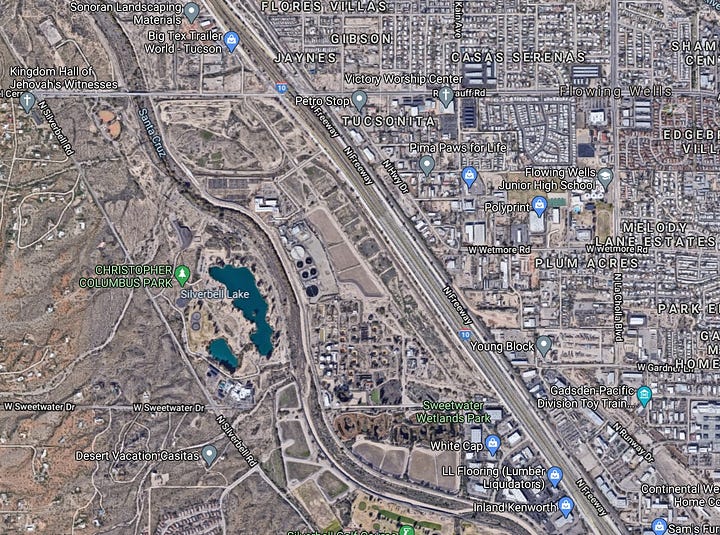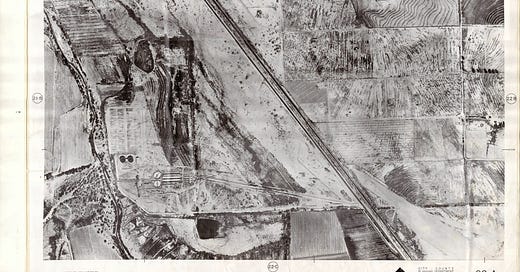🔄 Breathing New Life into Old Spaces: The Roger Road Story
🚮 Turning Brownfields into Green Parks 🧪 Innovating Wastewater Solutions for the Future 🏞️ Creating Habitats for Endangered Species
😽 Keepin’ It Simple Summary for Younger Readers
👧🏾✊🏾👦🏾
Pima County is turning an old water-cleaning place into a big park with cool animals and plants! 🐸🌳 They're making sure to keep it safe and healthy for everyone and even plan to study new ways to clean water there! 💧🏞️
🗝️ Takeaways
🚀 Pima County is transforming a decommissioned wastewater facility into a vibrant ecological oasis.
🌳 The project is part of the Multi-Species Conservation Plan, promoting biodiversity.
🐠 Plans include creating habitats for endangered species like the Gila top minnow.
🏗️ A research center for wastewater technologies aligns with the site's legacy.
🏡 Safeguarding public health with responsible redevelopment practices.
🌿 Transforming Pima County's Decommissioned Wastewater Facility into an Ecological Oasis 🏞️


Kevin Daily remembers the noxious sewage odors exuding from the Roger Road Wastewater Reclamation Facility when it was treating 41 million gallons of water on a daily basis.
“The memories to me are vivid,” said Daily, president of the Flowing Wells Neighborhood Association, the community adjacent to the treatment plant. “Did we like it? No. But I think moving here, you just kind of accepted it.”
The foul odors subsided when the facility closed in 2014, but a decade later, the infrastructure sits as a 47-acre blighted industrial property on the edge of the Santa Cruz River. Every day, Pima County wastewater workers patrol the huge empty concrete tanks and processing plants, now vulnerable to vandalism, trespassing and copper wire theft.
But Pima county officials are imagining a new, greener future for the Roger Road Wastewater Facility, as plans for the redevelopment of the brownfield earn funding from the U.S. Environmental Protection Agency.
Via Brownfield to wetlands: Pima county officials plan green future for contaminated facility.
As Pima County continues to grapple with the legacy of its industrial past, a remarkable opportunity has emerged to transform a decommissioned wastewater treatment facility into an ecological oasis that will benefit both the local community and the diverse plant and animal species that call this region home.
The Roger Road Wastewater Reclamation Facility, which operated for over 50 years before its closure in 2014, has sat largely vacant for over a decade. But now, thanks to a concerted effort by local officials, conservation groups, and community members, this former brownfield site is poised to embark on a new and exciting chapter.
At the heart of this transformation is Pima County's Multi-Species Conservation Plan (MSCP), a comprehensive strategy to protect the region's rich biodiversity while accommodating responsible development. By leveraging the MSCP's innovative "Certificate of Coverage" program, the county can tap into a "bank" of conserved land to mitigate the environmental impact of the facility's redevelopment.
This approach not only streamlines the endangered species compliance process but also enables the county to prioritize the acquisition of ecologically valuable land, ensuring that the new vision for the Roger Road site aligns with the broader goals of the MSCP.
As a result, plans are now in motion to transform a significant portion of the property into an expansion of the adjacent Agua Nueva Park, creating a vibrant wetlands habitat that can support the return of endangered species like the Gila topminnow and Huachuca water umbel.
However, the benefits of this redevelopment extend far beyond environmental conservation. The proposed plans also call for creating a research center focused on advancing wastewater treatment technologies, a nod to the site's industrial past and recognizing the critical role that innovative solutions will play in addressing the region's water challenges.
Moreover, by addressing the presence of hazardous building materials like lead-based paint and asbestos, the county is ensuring that the site's redevelopment unfolds responsibly and environmentally conscious. This proactive approach not only safeguards public health and the surrounding ecosystem but also paves the way for a future that prioritizes sustainability and community well-being.
As Pima County prepares to embark on this transformative journey, the lessons learned, and the insights gained will undoubtedly serve as a model for other communities grappling with the legacy of industrial blight.
By embracing a holistic, collaborative approach that balances ecological imperatives with economic and social considerations, the Roger Road Wastewater Reclamation Facility is poised to become a shining example of how to breathe new life into abandoned industrial sites and create vibrant, community-centric spaces that benefit both people and the planet.





